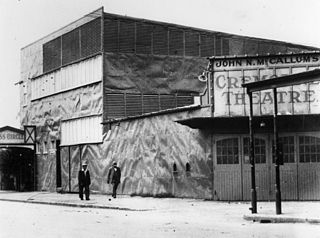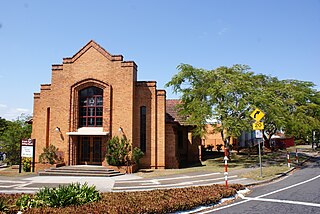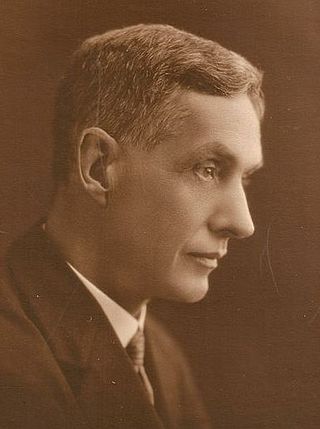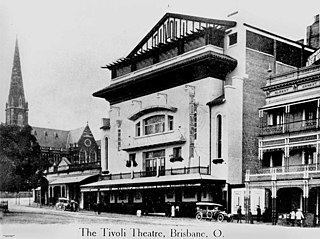
South Brisbane is an inner southern suburb in the City of Brisbane, Queensland, Australia. In the 2021 census, South Brisbane had a population of 14,292 people.

Petrie Terrace is an inner suburb in the City of Brisbane, Queensland, Australia. In the 2021 census, Petrie Terrace had a population of 1,168 people.

Hendra is a suburb of the City of Brisbane, Queensland, Australia. In the 2021 census, Hendra had a population of 4,914 people.

Banyo is a northern suburb in the City of Brisbane, Queensland, Australia. In the 2021 census, Banyo had a population of 6,105 people.

The Cremorne Theatre was a theatre in South Brisbane, Brisbane, Queensland, Australia that operated, with interruptions, from 1911 to 1954. Although nothing remains of it today, the general location retains its cultural significance from the first half of the twentieth century as a theatre precinct, thanks to the nearby construction of Queensland Performing Arts Centre (QPAC) in 1985. Its name lives on in the new Cremorne Theatre, one of the venues within QPAC.

The St Lucia Uniting Church is a heritage-listed Uniting church at 7 Hawken Drive, St Lucia, City of Brisbane, Queensland, Australia. Built in 1952, it was designed by Ronald Martin Wilson. The church, formerly known as St Lucia Presbyterian Church, was originally commissioned for the St Lucia congregation of Presbyterians, subsequently becoming the property of the Uniting Church. This church was the first substantial commission awarded to R. Martin Wilson after World War II. The church is listed on the Brisbane Heritage Register.

Karl Langer (1903–1969) was an Austrian-born architect in Queensland, Australia. A number of his works are listed on the Queensland Heritage Register.

Jeremiah Joseph Stable (1883–1953) was the first professor of English at the University of Queensland in Brisbane, Queensland, Australia.

Her Majesty's Theatre was a theatre in Brisbane, Queensland, Australia, between 1888 and 1983. It opened as Her Imperial Majesty's Opera House on 2 April 1888, and was known as His Majesty's Theatre between 1901 and 1952. The largest theatre in Brisbane, it was located at 193 Queen Street. Its façade was in the Italian Renaissance and Corinthian style.
The State Government Insurance Office Theatre, was a 600-seat proscenium theatre built within the SGIO office building at 179 Turbot Street, Brisbane, Queensland, Australia.
Peter Newell (1916–2010) was an Australian architect, who worked in the modernist tradition in Queensland and became an architectural critic.
Vitaly de Gzell (1908-1977) was a Russian-Australian architect, who practised in Queensland in the modernist tradition.
Dance Halls of Brisbane in the twentieth century were popular venues for entertainment, socialising and reflected styles of music, architecture, popular culture and city planning.
Helen Haenke (1916–1978) was an Australian artist, poet and playwright whose work was part of an emerging literary community in southeast Queensland in the late 1960s and 1970s.

Henry Mobsby (1860–1933) was a British/Australian artist and photographer, who helped film some of the earliest motion pictures produced in Australia.
Sydney Fancourt McDonald (1885-1947) was an Australian physician and military doctor. He was the first paediatrician within the Faculty of Medicine of the University of Queensland.

The Tivoli Theatre is a former theatre in Brisbane. It operated between 1914 until its closure in 1965 and demolition in 1969. It was situated opposite the Brisbane City Hall, in the site of the present King George Square.
Charles Da Costa (1889–1974) was an Australian architect known for his work as a railway architect in Queensland. He specialised in reinforced concrete and structural steel designs.
Roy Philip Parkinson was an Australian artist, known for his watercolour paintings. His works are collected in a number of Australian galleries.
George Birkbeck Mason, was an English-born Australian pianist, music and instruments retailer, dancing teacher and entrepreneur. He is perhaps best remembered as founder of Brisbane's first theatre, which eventually became the Theatre Royal, Brisbane. He was the father of organist Arthur John Mason.












